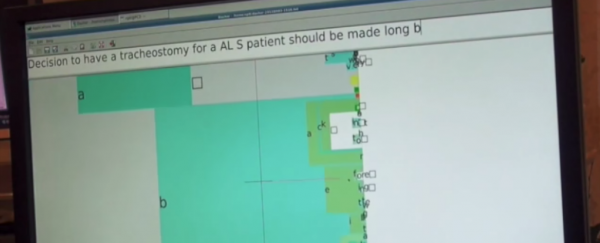New neural implant technology is being developed by researchers in the US, and it could transform the way disabled people are able to communicate with the world around them.
Designed for people who have been paralysed with ALS (amyotrophic lateral sclerosis), the system uses a network of very tiny electrodes implanted in the brain's motor cortex, and these electrodes are able to spot electrical activity created by thoughts. This activity is then decoded into a clear command for a computer cursor, allowing the ALS patient to input text into a computer just by thinking about it.
What the user actually thinks about is moving his or her finger on a trackpad, and the system - called BrainGate - then turns that into a movement on a display. By showing an intelligently cascading tree of letters on screen, letters and words can be formed at a typing speed of six words-per-minute.
The Stanford University team behind the invention hopes that the technology will be used to control robotic limbs, or even to stimulate human muscles in the future. It's not dissimilar to the project being carried out at the University of California, Irvine, which used the brainwaves of a paraplegic man to stimulate his legs for a short period of time.
And the system is getting better all the time: the new version of BrainGate has proved more adept at processing thoughts into actions and cutting out ambient electromagnetic noise. In fact, the speed from thinking to typing (or selecting) has more than doubled since BrainGate testing first began.
"The current work is a step towards one of our ultimate goals, which is to provide point-and-click control of any computer system whenever the user desires," study co-author Jaimie Henderson told reporters. Eventually, the uses could go way beyond typing to cover any kind of software program or task.
Right now, the system requires a small implant of around 4 mm2 to be inserted in the brain, but the researchers say that in the future a wireless device or cap could be used to achieve the same results. Around half a dozen ALS volunteers are currently involved in the project, and the results have been published in Nature Medicine.
